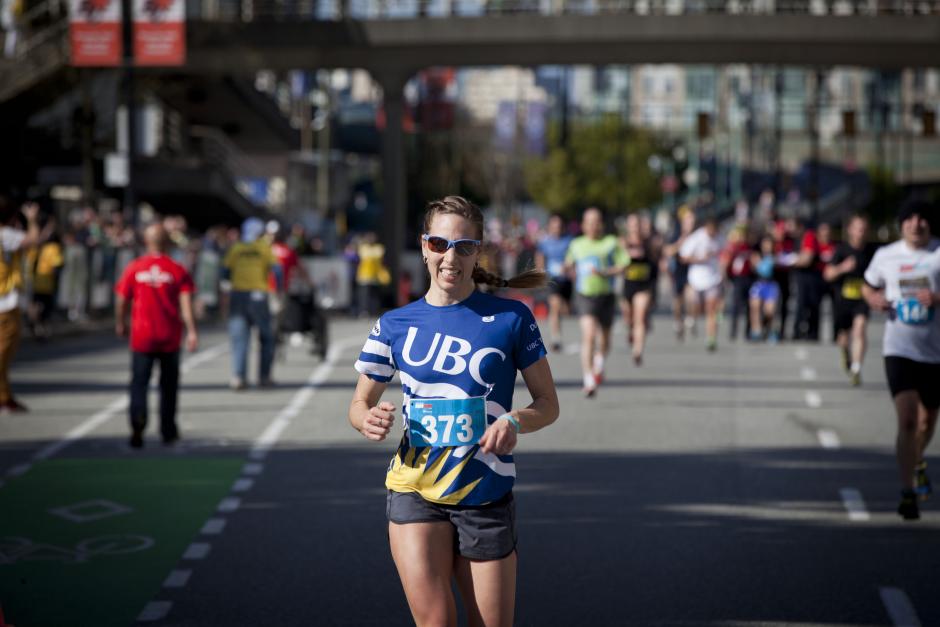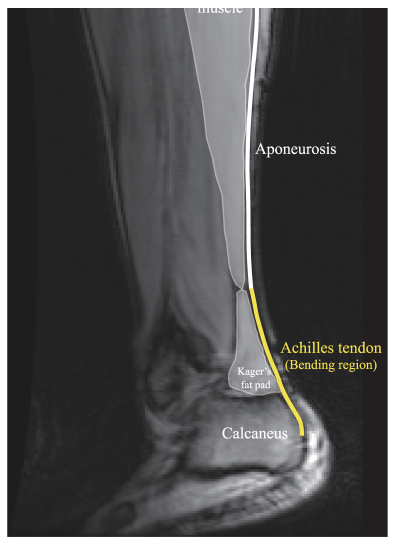The Achilles' heel of running... [with exercise video]
16579426994_5016012be6_k.jpg
 Credit:Flickr | GoToVan.com | creativecommons.org/licenses/by/2.0/
Credit:Flickr | GoToVan.com | creativecommons.org/licenses/by/2.0/
The Achilles' heel of running...
Running for leisure or fitness is a marvellous pastime. Not only can running improve our cardiovascular fitness and reduce our risk of heart attacks and strokes, it also give us a sense of mild euphoria from the release of endorphins and serotonin [1]. But is pain in your heel stopping you from your favourite pastime?
If you answer yes to the above question then you may be suffering from a condition known as Achilles tendonopathy.
The Achilles tendon is the largest, and arguably strongest, tendon in your whole body. It arises at the back of the ankle, connecting the large calf muscles (gastrocnemius and soleus) to the heel bone (calcaneus). It is the Achilles tendon that helps you go up onto tiptoes and "push" or "propel" you forward when you are running.

What is Achilles tendinopathy?
Despite our advances in cliincal anatomy and exercise physiology, the cause of Achilles tendonopathy is still not fully understood. However, we do know that tendinopathy often occurs when a tendon is placed under load and is unable to adapt to the stgrain being placed upon it. This leads to repeated small amounts of damage within the tendon fibres, and results in the tendon trying to heal itself in response to the strain by means of an inflammatory process. It is very common amongst runners and people with an active lifestyle. It may be caused in a number of ways including:
- A recent increase in training / increasing running distances too soon
- Running at too high an intensity / hill running
- Lack of variation in training
- Repetitive jumping on a hard surface, particularly in cold weather
- Old / inappropriate footwear
- Trauma/fall
- Increased tension in the calve muscles
What are the risk factors for developing Achilles tendinopathy?
General risks:
-
Age: Achilles tendinopathy is most common from the age of 30 onwards.
-
Gender: It is more common in men.
-
Weight: If you have a higher than average body weight you are more at risk of developing Achilles tendinopathy.
-
Diabetes: If you have diabetes you are at an increased risk of developing Achilles tendinopathy.
-
Tight and/or weak calf muscles.
-
Poor endurance strength of the calf muscles.
-
Poor core stability around the hip/knee.
-
Stiff joints in the foot.
Certain aspects of exercise and training can also increase your risk of developing Achilles tendinopathy.
With an Achilles tendinopathy you may experience symptoms such as: pain, swelling, reduced range of movement. However these should all improve with the correct treatment.
Treatment options
(1) Relative rest: You can help to maintain your fitness using different forms of exercise that rest your Achilles tendon, such as swimming, cycling, aqua jogging (running in water).
(2) Ice: Applying ice wrapped in a damp tea towel to the tendon helps reduce pain. Apply for a maximum of 20 minutes, 4 times a day, or after exercise.
(3) Simple painkillers: Paracetamol or anti-inflammatories such as ibuprofen or diclofenac.
(4) Physiotherapy: This may involve several different treatment options including: • manual techniques • specific exercises • stretches.
(5) Eccentric exercise program: This particular type of controlled exercise helps your swollen Achilles tendon return to normal and forms the main component of the rehabilitation programme.
Exercise 1 - single leg heel raise
Exercise 2 - heel raise off a step
Other treatments can be considered if the above fail. If this happens, your physiotherapists will discuss them with you other treatment modalities, which may include:
-
podiatry referral for assessment for shoe inserts
-
dry needling (this is similar to acupuncture)
-
Up-to-date evidence suggests that steroid injections are not the best treatment option; therefore we do not recommend their use.
If you suffer from Achilles tendinopathy and would like further help with your recovery, please do not hesitate to come and ask one of us at your local PhysioQinetics clinic - we offer comprehensive services from physiotherapy, sports massage, to acupuncture, podiatry and biomechanical / running assessment.
Reference:-
1. Heijnen, S., Hommel, B., et al. Neuromodulation of aerobic exercise - a review. Front Psychol 2015; 6:1890. doi: 10.3389/fpsyg.2015.01890
2. Reid, H., Wood, S. Information leaflet: Achilles tendinopathy: advice and management. Oxford University Hospital NHS Foundation Trust. 2015, reviewed 2018